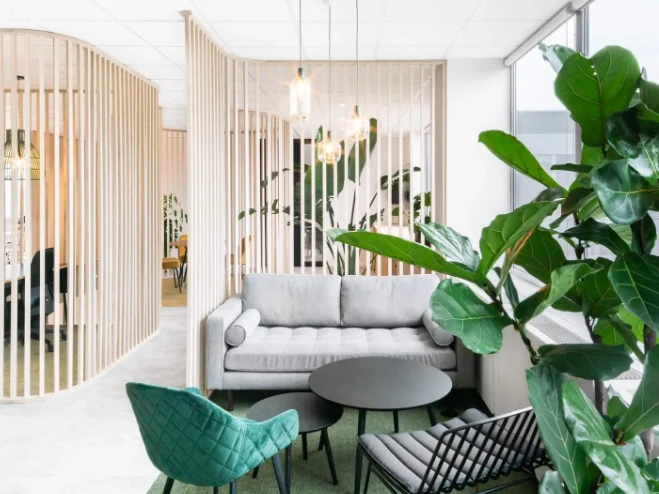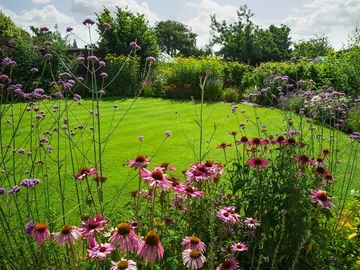Imagine a home that feels like a sanctuary, a place where stress melts away and your well-being flourishes. Enter biophilic design, a concept that harnesses the innate human connection to nature to create healthier and more harmonious living spaces. We know it sounds so foreign yet it's a good way to make your home eccentric! It can be applied in your whole home or just in your living room too. That's fantastic right, let's delve into this new -to -you interior design concept!
Biophilia: Our Inherent Love of Nature
Biophilia, meaning "love of life" in Greek, refers to our inherent need to connect with nature. Studies have shown that exposure to natural elements can significantly improve our physical and mental health. Biophilic design translates this concept into the built environment, aiming to bring the outdoors in.
Benefits of a Biophilic Oasis
The benefits of incorporating biophilic design principles into your home are numerous:
- Reduced Stress and Improved Mood: Surrounding yourself with nature has a calming effect. Studies show that exposure to greenery can lower stress hormones and improve feelings of well-being.
- Enhanced Creativity and Focus: Biophilic elements can stimulate the senses and boost cognitive function, leading to increased creativity and focus.
- Improved Sleep Quality: Natural light exposure during the day helps regulate your sleep-wake cycle, promoting better sleep at night.
- Increased Indoor Air Quality: Plants act as natural air purifiers, removing toxins and pollutants from the air you breathe.
Weaving Nature's Magic into Your Home
Now that you're convinced of the power of biophilic design, let's explore ways to bring nature's magic into your Zimbabwean home:
- Embrace the Power of Plants: Indoor plants are the ultimate biophilic design element. Choose a variety of plants with different shapes, sizes, and textures to create a mini indoor jungle. Spider plants, known for their air-purifying properties, and the low-maintenance ZZ plant, thrive in bright, indirect sunlight, which is perfect for Zimbabwe's climate.
- Harness the Light: Natural light is a key element of biophilic design. Maximise natural light by keeping windows clear and uncluttered. Consider skylights or light tubes for areas that lack natural illumination.
- Welcome the Outdoors: Open floor plans that allow for a seamless flow between indoor and outdoor spaces are ideal for biophilic design. If you have a balcony or courtyard, incorporate comfortable seating and lush greenery to create an inviting outdoor extension of your living space.
- Embrace Natural Materials: Surround yourself with natural materials like wood, stone, bamboo, and cotton. Wood furniture, with its natural textures and warm tones, brings a sense of the outdoors in. Look for locally sourced, sustainable materials to add an authentic Zimbabwean touch.
- Water Features: The sound of trickling water is incredibly calming. Consider incorporating a small water feature, like a tabletop fountain, to create a serene atmosphere.
- Biomimicry: Biomimicry involves drawing inspiration from nature's patterns and forms. Introduce curved furniture or organic shapes in your decor to subtly mimic natural elements.
Remember: Biophilic design isn't about complete makeovers; it's about unlocking tranquillity in your Zimbabwean home. Start small and embrace nature's calming influence. Think: maximising natural light, welcoming houseplants, or incorporating soothing water features. Even a few biophilic touches can create your personal haven of well-being. Unwind and reconnect with yourself in a Zimbabwean home inspired by nature.
 Continue with Facebook
Continue with Facebook
 Continue with Email
Continue with Email














